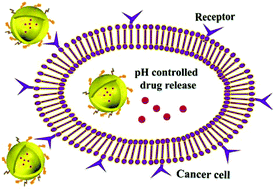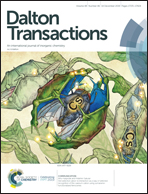Hollow structural metal–organic frameworks exhibit high drug loading capacity, targeted delivery and magnetic resonance/optical multimodal imaging†
Abstract
Metal–organic frameworks (MOFs) are attractive in designing drug delivery systems for the treatment of cancer because of their unique porous properties. However, the search for multifunctional MOFs with high drug loading and magnetic resonance/fluorescence imaging capacities is still a challenge and they have rarely been reported. In this article, using the intrinsic advantages of MOFs, hollow Fe-MOFs with biomolecular grafting were fabricated and shown to be capable of loading much more drugs and exhibiting targeted drug delivery, pH-controlled drug release and magnetic resonance/fluorescence imaging. Benefiting from their hollow structures, the drug loading capacity is as high as 35%. Due to post-modification with folic acid (FA) and the fluorescent reagent (5-FAM) and the existence of Fe(III), in vitro experiments indicate that Fe-MOF-5-NH2-FA-5-FAM/5-FU can target cancer cells HepG-2 and display excellent magnetic resonance/fluorescence imaging. Furthermore, in vivo biodistribution indicates that Fe-MOF-5-NH2-FA-5-FAM/5-FU can accumulate in the tumor. Taken together, our work integrates high drug loading and bioimaging into a single MOF successfully and reveals the enormous potential of the functionalized MOF for drug delivery and bioimaging.



 Please wait while we load your content...
Please wait while we load your content...